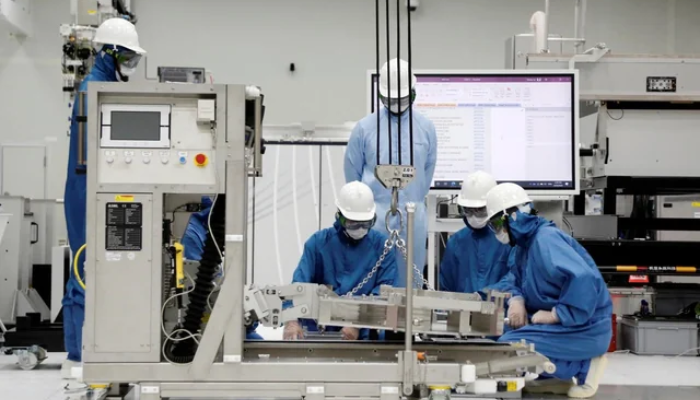The Japan China gallium semiconductor battery warning has raised global alarms across the technology, electronics, and energy sectors. With China controlling the vast majority of the world’s gallium exports—a rare and essential material used in semiconductors and advanced batteries—Japan has issued a warning that may reshape international supply chains.
This isn’t just a trade issue. It’s a potential crisis for industries relying on gallium for chips, electric vehicles (EVs), military technologies, and high-performance batteries. In this article, we break down the warning, explore its causes and consequences, and uncover how countries and companies are reacting to avoid a technological meltdown.
What is Gallium and Why Is It So Important?
Gallium is a soft, silvery metal used in high-tech applications, especially in the form of compounds like gallium nitride (GaN) and gallium arsenide (GaAs). These compounds are essential in producing semiconductors, LEDs, 5G technology, and advanced battery systems. Because of its excellent heat resistance and efficiency, gallium enables faster, smaller, and more powerful electronics.
Japan relies heavily on gallium to support its advanced manufacturing industries, including smartphones, defense systems, and EVs. With China producing over 90% of the global supply, gallium is not just a commodity—it’s a strategic resource. The Japan China gallium semiconductor battery warning highlights how geopolitical tensions over this element could paralyze critical supply chains.
Furthermore, gallium is now emerging in next-generation batteries for electric vehicles and grid energy storage. Its use in solid-state battery technologies is gaining attention, and a supply disruption could delay innovation in cleaner, more efficient energy systems worldwide.
China’s Export Restrictions: Strategic Leverage or Global Risk?
In 2023, China announced new export controls on gallium and germanium, citing national security. However, many global observers believe this move was a strategic response to U.S.-led restrictions on semiconductor equipment exports to China—restrictions supported by Japan and the EU.
This policy shift has direct implications for Japan. Companies such as Sony, Toyota, and Panasonic depend on gallium to maintain production. Even minor supply disruptions can lead to delays, cost surges, or forced technological substitutions. Hence, the Japan China gallium semiconductor battery warning was issued to signal the urgency of the situation.
China’s move is seen by some as an early sign of a “materials cold war,” where countries use control of rare elements to gain economic and political influence. Japan, being one of the most technologically advanced nations, stands at the center of this unfolding drama.
Effects on Semiconductor and Battery Manufacturing
The semiconductor industry is particularly exposed. Gallium-based chips are more efficient and powerful than silicon ones, and they are used in EV chargers, data centers, defense systems, and aerospace. Any disruption in gallium availability will directly affect production capabilities and innovation in these areas.
On the battery side, gallium is increasingly used in solid-state and flexible batteries, which are lighter, safer, and longer-lasting than traditional lithium-ion batteries. Japan is one of the leaders in solid-state battery R&D, and any limitation on gallium supply threatens to stall this momentum.
In addition, companies in the U.S., Germany, South Korea, and elsewhere rely on Japanese components. If Japan’s manufacturing slows down, the ripple effect will spread across global supply chains. Prices may rise, product releases may be delayed, and the race for energy-efficient technology could slow.
Japan’s Strategic Response to the Supply Chain Risk
In response to the warning and the broader risk, Japan is taking aggressive action. The government is investing in alternative gallium sources through international partnerships with resource-rich but stable nations like Australia, Canada, and Vietnam. These partnerships aim to reduce reliance on China by diversifying the import base.
Additionally, Japanese companies and universities are accelerating research in gallium recycling and synthetic alternatives. Recovering gallium from electronic waste is difficult but possible with new technologies. Companies are also exploring ways to reduce gallium usage or replace it with new, high-efficiency materials.
Japan’s Ministry of Economy, Trade and Industry (METI) has pledged funding to support local innovation and material science programs. These efforts reflect Japan’s broader strategy: building a resilient, self-sustaining tech industry that is better insulated from geopolitical risks.
A Global Wake-Up Call for Tech Security
The Japan China gallium semiconductor battery warning is more than a bilateral concern—it’s a global warning. The tech industry is waking up to the fact that control over critical materials like gallium could define the future of innovation. Governments and corporations must now prioritize resource security, diversified sourcing, and materials innovation.
This development may also trigger broader changes in trade policies. Expect to see increased investment in rare-earth exploration, international mineral alliances, and possibly new WTO regulations on critical materials. Moreover, sustainability will become more important, as environmental concerns over mining rise alongside demand.
Ultimately, countries that secure access to these rare materials—and those that develop alternatives—will lead the next wave of technological progress. For now, gallium is not just an ingredient; it’s a geopolitical tool.
Conclusion:
The Japan China gallium semiconductor battery warning has highlighted how fragile and interconnected our global tech infrastructure really is. Japan’s timely alert should serve as a wake-up call for the rest of the world. Gallium may be obscure to the public, but it is central to the future of chips, EVs, defense systems, and green energy.
As supply chains are tested and realigned, countries and companies must act swiftly to ensure they are not left behind. Whether through strategic partnerships, new technologies, or sustainable practices, the race to secure gallium is now underway—and the stakes are nothing less than the future of global innovation.
FAQs:
1. Why did Japan issue a warning about gallium?
Japan issued the warning in response to China’s export restrictions, highlighting risks to semiconductor and battery industries.
2. What is gallium used for?
Gallium is used in semiconductors, LEDs, solar panels, defense systems, and cutting-edge battery technologies.
3. Why is gallium so important to Japan?
Japan depends on gallium for its electronics, automotive, and energy sectors. Disruptions can affect production and innovation.
4. How much gallium does China control?
China produces more than 90% of the world’s gallium supply, giving it significant global leverage.
5. What are the risks of restricted gallium supply?
Shortages can lead to higher prices, manufacturing delays, and slowed innovation in key tech sectors.
6. Are there any gallium alternatives?
Researchers are exploring alternatives, but none currently match gallium’s efficiency for many high-tech applications.
7. Can gallium be recycled?
Yes, but the process is complex and still being refined for large-scale use.
8. How is Japan responding to this risk?
Japan is diversifying its sources, funding recycling programs, and investing in alternative material research.
9. What industries are most at risk?
Semiconductors, EV batteries, aerospace, defense, and renewable energy are the most affected.
10. Will this affect global consumers?
Yes, especially if production slows or costs rise for electronics, EVs, or energy systems due to material shortages.



